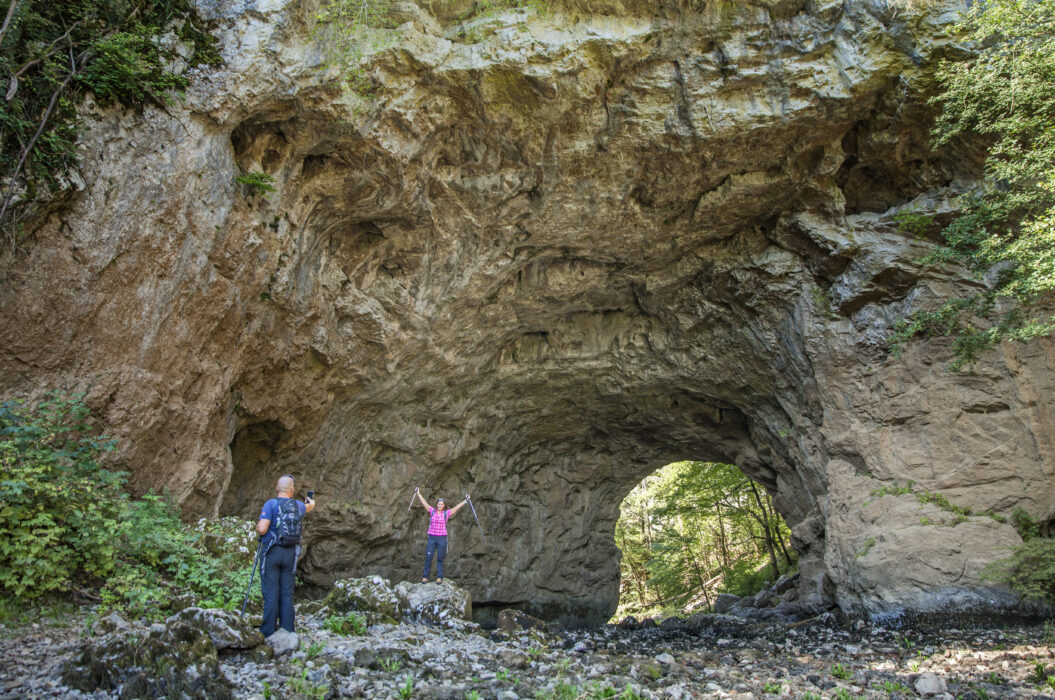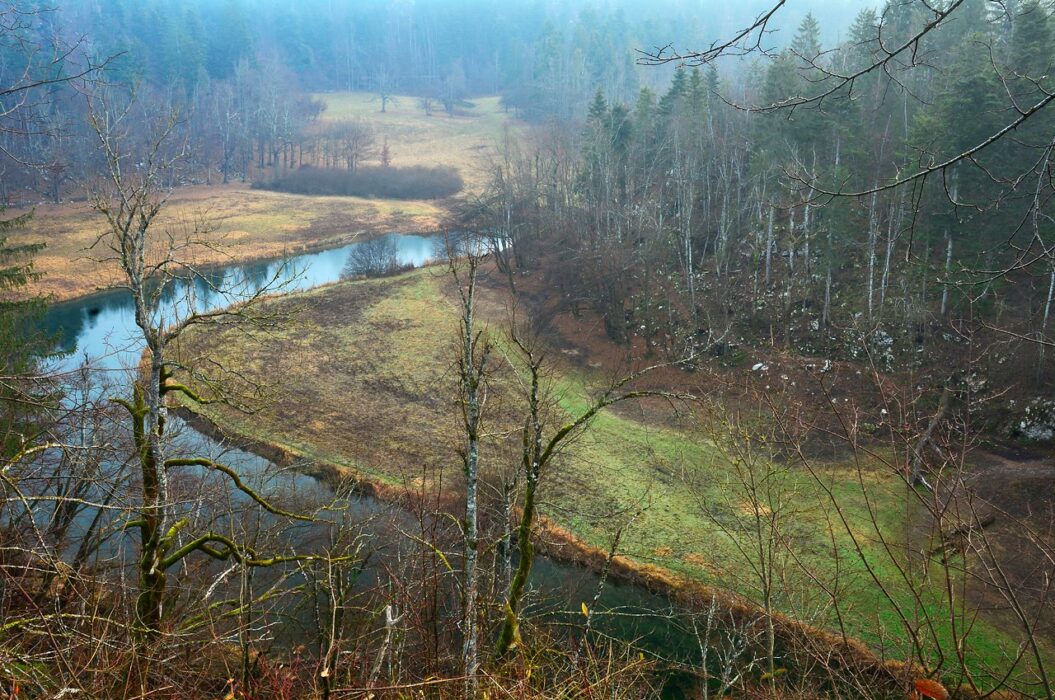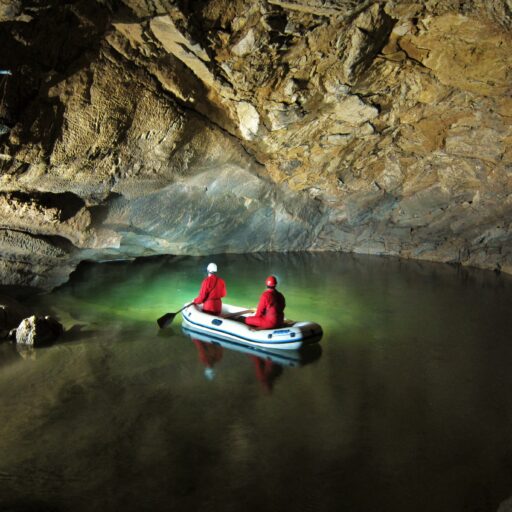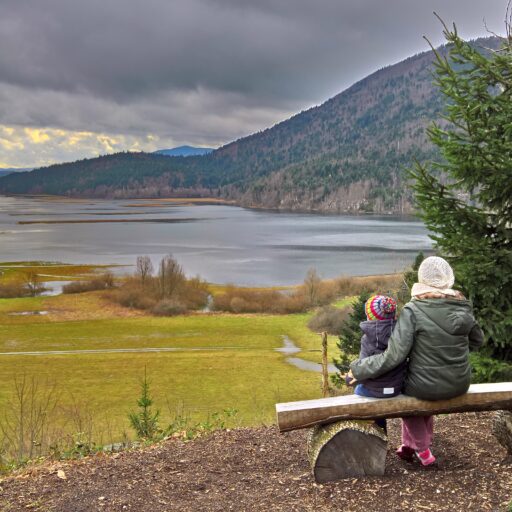A visit to this picturesque karst valley, created from a karst cave by its ceiling caving in and collapsing, leaves no one indifferent!
Resting in the shade of centuries-old oaks, the view from the magnificent Great Natural Bridge, going back in time at the ruins of the Church of St. Cantius, refreshing with the cave air under the graceful natural arch of the Small Natural Bridge or walking along the soft surface of the well-maintained footpath next to the tall trees is an unforgettable experience again and again, etc.
Here, on an afternoon walk, we witness the geological processes lasting millions of years, which shaped this karst valley. Therefore, the nomination of Rakov Škocjan for UNESCO World Heritage List is not surprising at all.
Rakov Škocjan is a karst valley at the northern foothills of Javorniki, created from a karst cave by its ceiling caving in and collapsing. This is evidenced by the 42m high Small Natural Bridge, the 37m high Great Natural Bridge and the gorges behind them.
The Rak stream meanders along the bottom of the flat clay bottom, surrounded by reeds and floodplain meadows. Rak is filled with water that flows through the underground from Cerknica Field and from below Javorniki. The stream flows to the surface from the Zelška Caves on the eastern side of the valley, and sinks into the Tkalca Cave on the western part.
Together with Cerknica Lake and Križna Cave, Rakov Škocjan has been declared an internationally important wetland – a Ramsar site. The valley is also the first Slovenian landscape park, founded in 1949. As befits such a natural landmark, a natural history trail runs through the valley.





